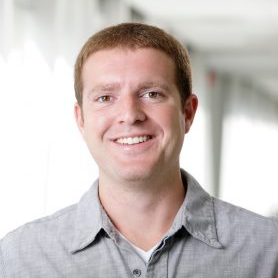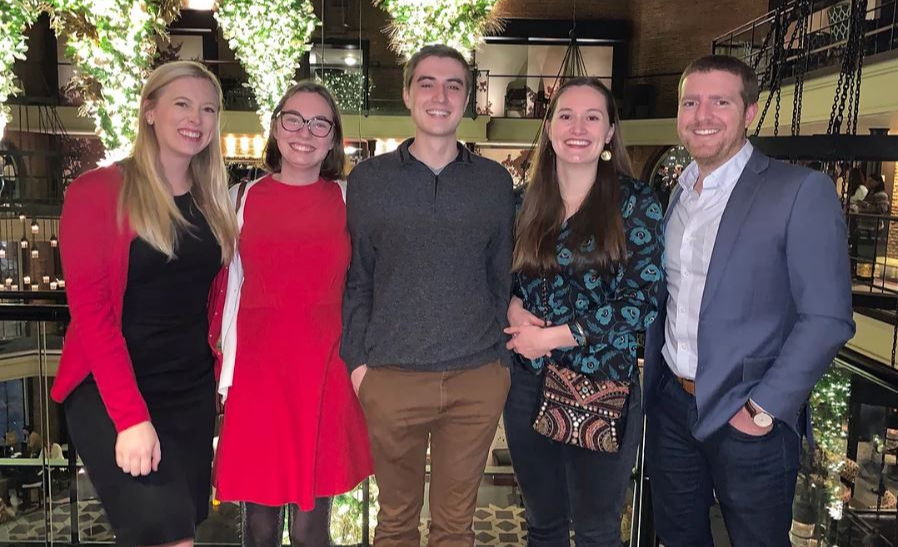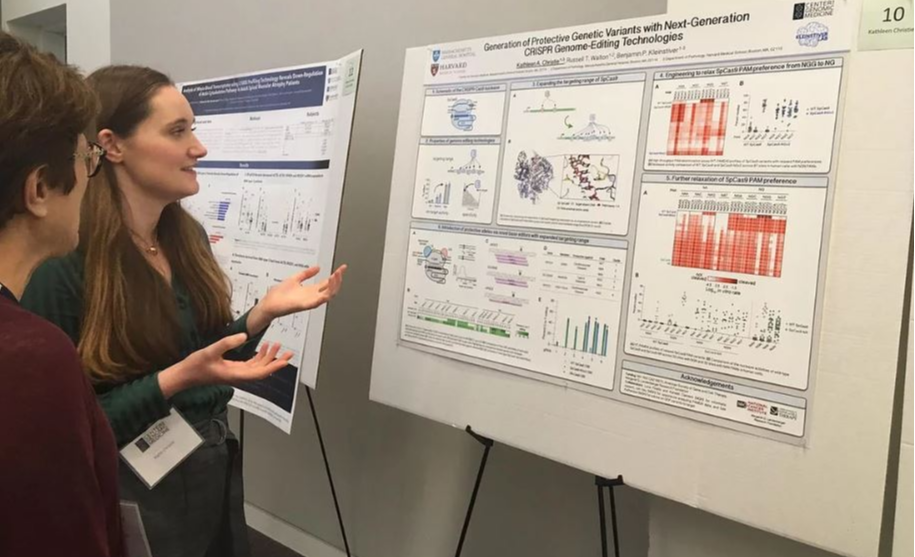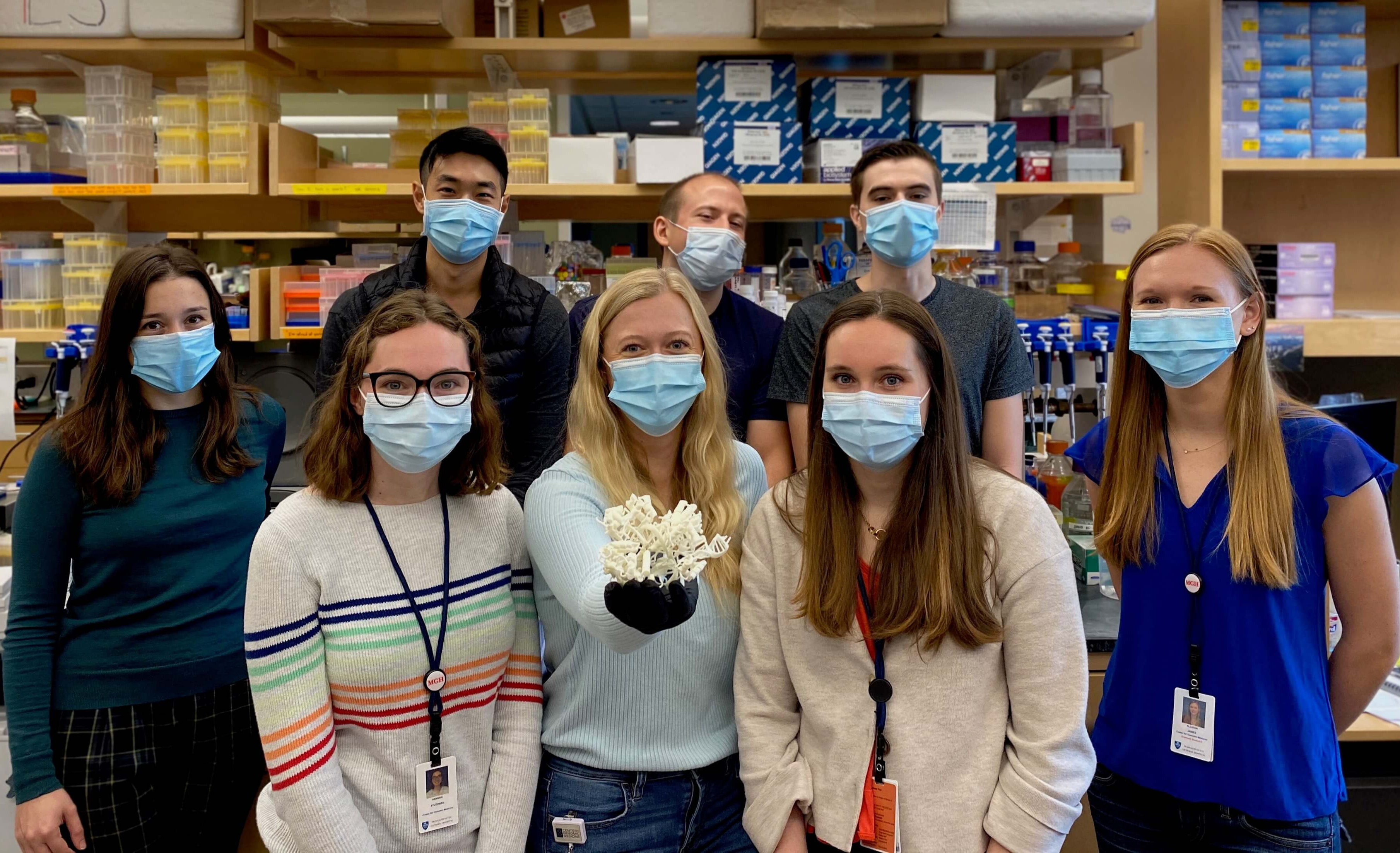Research Area
We develop genome engineering technologies for research applications and for the treatment of human diseases. We have a deep interest in building, characterizing, and optimizing new genome editing technologies to further enable their wide application across a variety of scientific disciplines. A major goal of our lab is to learn about the challenges that face the effective clinical translation of genome editing technologies. Situated in the Center for Genomic Medicine at Massachusetts General Hospital, our group is collaborating with several other laboratories to leverage novel technologies to both create disease models, and to develop preclinical strategies to correct pathogenic sequences. We're pursuing these efforts with the hope that the promise of genome editing technologies can be realized for the treatment of human diseases.
Team Description
Within the Center for Genomic Medicine at MGH, the Kleinstiver laboratory seeks to address limitations of CRISPR genome editing technologies while solving important research questions at the forefront of the genome editing field. Such questions include: (1) Strategies to improve the utility and safety of CRISPR genome editing technologies; (2) Development of genome editing reagents for the identification and correction of pathogenic genetic sequences; (3) Translating the genome editing toolbox into molecular medicines. Lab website: https://www.kleinstiverlab.org/
Team Members
Team Show
Publications
1. Hille LT, Kleinstiver BP. (2021) Plant genome editing branches out. Nature Plants; doi: 10.1038/s41477-020-00840-7, online ahead of print
2. Neggers JE, Jacquemyn M, Dierckx T, Kleinstiver BP, Thibaut HJ, Daelemans D. (2020) enAsCas12a Enables CRISPR-Directed Evolution to Screen for Functional Drug Resistance Mutations in Sequences Inaccessible to SpCas9. Molecular Therapy; doi: 10.1016/j.ymthe.2020.09.025, online ahead of print
3. Schmidts A, Marsh LC, Srivastava AA, Bouffard AA, Boroughs AC, Scarfò I, Larson RC, Bedoya F, Choi BD, Frigault MJ, Bailey SR, Leick MB, Vatsa S, Kann MC, Prew MS, Kleinstiver BP, Joung JK, Maus MV. (2020) Cell-based artificial APCs resistant to lentiviral transduction for efficient generation of CAR-T cells from various cell sources. Journal for ImmunoTherapy of Cancer; doi: 10.1136/jitc-2020-000990, online ahead of print
4. DeWeirdt PC, Sanson KR, Sangree AK, Murda H, Hanna RE, Feeley MN, Griffith AL, Teng T, Borys SM, Strand C, Joung JK, Kleinstiver BP, Pan X, Huang A, Doench JG. (2020) Optimization of AsCas12a for combinatorial genetic screens in human cells. Nature Biotechnology; doi: 10.1038/s41587-020-0600-6, online ahead of print
5. Cruz L, György B, Cheah PS, Kleinstiver BP, Eimer WA, Garcia SP, Sharma N, Ozelius LJ, Bragg DC, Joung JK, Norberto de Souza O, Macedo Timmers LFS, Breakefield XO. (2020) Mutant Allele-Specific CRISPR Disruption in DYT1 Dystonia Fibroblasts Restores Cell Function. Molecular Therapy Nucleic Acids; 15(21):1-12
6. Osuna BA, Karambelkar S, Mahendra C, Christie KA, Garcia B, Davidson AR, Kleinstiver BP, Kilcher S, Bondy-Denomy J. (2020) Listeria Phages Induce Cas9 Degradation to Protect Lysogenic Genomes. Cell Host Microbe; S1931-3128(20):30190-6
7. Walton RT, Christie KA, Whittaker MN, Kleinstiver BP. (2020) Unconstrained Genome Targeting with near-PAMless Engineered CRISPR-Cas9 Variants. Science; 368(6488):290-6
Featured in:
i. All-purpose enzymes boost CRISPR’s powers. Nature. 2020 March 26, Research Highlights; 580(7801):10
ii. Tang L. PAM-less is more. Nature Methods; 2020 June 4, Research Highlights; 17(6): 559
iii. Levesque S, Agudelo D, Doyon Y. Rewired Cas9s with Minimal Sequence Constraints. Trends in Pharm. Sciences; e-pub ahead of print, doi: 10.1016/j.tips.2020.04.009
iv. Zhang D, Zhang B. SpRY: Engineered CRISPR/Cas9 Harnesses New Genome-Editing Power. Trends in Genetics; e-pub ahead of print, doi: 10.1016/j.tig.2020.05.001
v. Cohrt KO. Breaking the PAM Barrier. CRISPR Medicine News; https://bit.ly/36dzhHZ
vi. Kling J. CRISPR gets crunchy. Nature Lab Animal; 2020 December 7, Technology Feature; 50:9-11
8. Mahendra C, Christie KA, Osuna BA, Pinilla-Redondo R, Kleinstiver BP, Bondy-Denomy J. (2020) Broad-spectrum anti-CRISPR proteins facilitate horizontal gene transfer. Nature Microbiology; 5(4):620-629
9. Breuer CB, Hanlon KS, Natasan JS, Volak A, Meliani A, Mingozzi F, Kleinstiver BP, Moon JJ, Maguire CA. (2020) In Vivo Engineering of Lymphocytes After Systemic Exosome-Associated AAV Delivery. Scientific Reports; 11;10(1):4544
10. Hanlon KS, Kleinstiver BP, Garcia SP, Zaborowski SP, Volak A, Spirig SE, Muller A, Sousa AA, Tsai SQ, Bengtsson NE, Lööv C, Ingelsson M, Chamberlain JS, Corey DP, Aryee MJ, Joung JK, Breakefield XO, Maguire CA, György B. (2019) High Levels of AAV Vector Integration Into CRISPR-induced DNA Breaks. Nature Communications; 10(1):4439-4449
11. Anikeeva P, Boyden E, Brangwynne C, Cissé II, Fiehn O, Fromme P, Gingras AC, Greene CS, Heard E, Hell SW, Hillman E, Jensen GJ, Karchin R, Kiessling LL, Kleinstiver BP, Knight R, Kukura P, Lancaster MA, Loman N, Looger L, Lundberg E, Luo Q, Miyawaki A, Myers EW Jr, Nolan GP, Picotti P, Reik W, Sauer M, Shalek AK, Shendure J, Slavov N, Tanay A, Troyanskaya O, van Valen D, Wang HW, Yi C, Yin P, Zernicka-Goetz M, Zhuang. (2019) Voices in Method Development. Nature Methods; 16(10):945–951
12. György B, Nist-Lund C, Pan B, Asai Y, Karavitaki KD, Kleinstiver BP, Garcia SP, Zaborowski MP, Solanes P, Spataro S, Schneider BL, Joung JK, Géléoc GSG, Holt JR, Corey DP. (2019) Allele-specific Gene Editing Prevents Deafness in a Model of Dominant Progressive Hearing Loss. Nature Medicine; 25(7):1123-1130
13. Kleinstiver BP**, Sousa AA, Walton RT, Tak YE, Hsu JY, Clement K, Welch MM, Horng JE, Malagon-Lopez J, Scarfò I, Maus MV, Pinello L, Aryee MJ, Joung JK**. (2019) Engineered CRISPR-Cas12a variants with increased activities and improved targeting ranges for gene, epigenetic and base editing. Nature Biotechnology; 37(3):276-282
**co-corresponding authors
14. Marino ND, Zhang JY, Borges AL, Sousa AA, Leon LM, Rauch BJ, Walton RT, Berry JD, Joung JK, Kleinstiver BP, Bondy-Denomy J. (2018) Discovery of widespread type I and type V CRISPR-Cas inhibitors. Science; 362(6411):240-24
Featured In:
i. Koonin EV, Makarova KS. Anti-CRISPRs on the march. Science; 2018 October; 362(6411):156-7
ii. Rusk N. Keeping CRISPR in check. Nature Methods; 2018 November; 15(11):857
15. Lee K, Zhang Y, Kleinstiver BP, Guo JA, Aryee MJ, Miller J, Malzahn A, Zarecor S, Lawrence-Dill CJ, Joung JK, Qi Y, Wang K. (2019) Activities and specificities of CRISPR/Cas9 and Cas12a nucleases for targeted mutagenesis in maize. Plant Biotechnology Journal; 17(2):362-372
16. György B, Lööv C, Zaborowski MP, Takeda S, Kleinstiver BP, Commins C, Kastanenka K, Mu D, Volak A, Giedraitis V, Lannfelt L, Maguire CA, Joung JK, Hyman BT, Breakefield XO, Ingelsson M. (2018) CRISPR/Cas9 Mediated Disruption of the Swedish APP Allele as a Therapeutic Approach for Early-Onset Alzheimer’s Disease. Molecular Therapy Nucleic Acids; 11:429-440
17. Chowdhury TA, Koceja C, Eisa-Beygi S, Kleinstiver BP, Ku Kumar SN, Lin CW, Li K, Prabhudesai S, Joung JK, Ramchandran R. (2018) Temporal and Spatial Post-Transcriptional Regulation of Zebrafish tie1 mRNA by Long Noncoding RNA During Brain Vascular Assembly. Arteri. Thromb. Vasc. Biol.; 38(7):1562-1575
18. Li P, Kleinstiver BP, Leon MY, Prew MS, Nararro-Gomez D, Greenwald SH, Pierce EA, Joung JK, Liu Q. (2018) Allele-specific editing of rhodopsin P23H knock-in mice broadens therapeutic potential of CRISPR/Cas for dominant genetic diseases. The CRISPR Journal; 1(1):55-64
19. Listgarten J, Weinstein M, Kleinstiver BP, Sousa AA, Joung JK, Crawford J, Gao K, Hoang L, Elibol M, Doench JG, Fusi N. (2018) Predicting off-target effects in silico for end-to-end CRISPR guide RNA design. Nature Biomedical Engineering; 2: 38-47
20. Tak ET, Kleinstiver BP, Nuñez JK, Hsu JY, Horng JE, Gong J, Weissman JS, Joung JK. (2017) Inducible and multiplex gene regulation using CRISPR-Cpf1-based transcription factors. Nature Methods; 14(12):1163-1166
21. Chen JS*, Dadgas YS*, Kleinstiver BP*, Welch MW, Sousa AA, Harrington LB, Sternberg SH, Joung JK, Yildiz A, Doudna JA (2017) Enhanced proofreading governs CRISPR-Cas9 targeting accuracy. Nature; 550(7676):407-10
*co-first author
Featured In:
i. Tools in Brief. Biochemistry: Hyper-accurate Cas9. Nature Methods. 2017 November; 14(11):1032
22. Ando K, Shah AK, Sachdev V, Kleinstiver BP, Taylor-Parker J, Welch MM, Hu Y, Salgia R, White FM, Parvin JD, Ozonoff A, Rameh LE, Joung JK, Bharti AK. (2017) Camptothecin resistance is determined by the regulation of topoisomerase I degradation mediated by Ubiquitin Proteasome Pathway. Oncotarget, 10.18632/oncotarget.16376
23. Kleinstiver BP*, ** and Tsai SQ*, Prew MS, Nguyen NT, Welch MM, Lopez JM, McCaw ZR, Aryee MJ, Joung JK** (2016) Genome-wide specificity profiles of CRISPR-Cas Cpf1 nucleases in human cells. Nature Biotechnology, 34(8):869-74
*co-first authors **co-corresponding authors
Featured In:
i. Ledford H. Beyond CRISPR: A guide to the many other ways to edit a genome. Nature. 2016 August; 536(7615):136-7
ii. Tools in Brief. Showdown between Cas9 and Cpf1. Nature Methods. 2016 August; 13(9):714
24. Saha S, Gordan J, Kleinstiver BP, Vu P, Najem M, Yeo JC, Kato Y, Levin R, Webber J, Damon L, Egan R, Greninger P, McDermott U, Garnett M, Hezel A, Liss A, Mizukami Y, Goyal L, Ferrone C, Zhu A, Joung JK, Shokat K, Benes C, Bardeesy N. (2016) Isocitrate dehydrogenase mutations confer dasatinib hypersensitivity and SRC-dependence in intrahepatic cholangiocarcinoma Cancer Discovery, doi: 10.1158/2159-8290
25. Kleinstiver BP* and Pattanayak V*, Prew MS, Tsai SQ, Nguyen NT, Zheng Z, Joung JK (2016) High-fidelity CRISPR-Cas9 nucleases with no detectable genome-wide off-target effects. Nature, 529(7587):490-5
*co-first authors
Featured In:
i. Servick K. Researchers rein in slice-happy gene editor. Science, 2016-01; doi:10.1126/science.aae0182
ii. Urnov F. The domestication of Cas9. Nature, 2016 January; 529(7587):468-9
iii. Tools in Brief. Cas9 on Target. Nature Methods, 2016 March; 13(3):200
iv. Nelson CE, Gersbach CA. Cas9 loosens its grip on off-target sites. Nature Biotechnology. 2016 March; 34(3):298-9
v. Selected Faculty of 1000 Recommended Article, 2016: http://F1000.com/prime/726058228
26. Kleinstiver BP**, Prew MS, Nguyen NT, Tsai SQ, Topkar VV, Zheng Z, Joung JK** (2015) Broadening the targeting range of Staphylococcus aureus CRISPR-Cas9 by modifying PAM recognition. Nature Biotechnology, 33(12):1293-8
**co-corresponding authors
27. Kleinstiver BP, Prew MS, Tsai SQ, Topkar V, Nguyen NT, Zheng, Z, Gonzales APW, Li Z, Peterson RT, Yeh J-RJ, Aryee MJ, Joung JK (2015) Engineered CRISPR-Cas9 nucleases with altered PAM specificities. Nature, 523(7561):481-5
Featured in:
i. Elsner M. New PAMs for Cas. Nature Biotechnology, 2015 August; 33(8):829
ii. Rusk N. Engineering Cas9. Nature Methods, 2015 August; 12(8):709
iii. Keener AB. Delivering the goods: Scientists seek a way to make CRISPR-Cas gene editing more targeted. Nature Medicine, 2015 November; 21(11):239-41
iv. Selected Faculty of 1000 Recommended Article, 2017: http://F1000.com/prime/725579684
28. Black JC, Atabakhsh E, Kim J, Biette KM, Van Rechem C, Ladd B, Burrowes PD, Donado C, Mattoo H, Kleinstiver BP, Song B, Andriani G, Joung JK, Iliopoulos O, Montagna C, Pillai S, Getz G, Whetstine JR (2015) Hypoxia drives transient site-specific copy gain and drug-resistant gene expression. Genes and Development, 29(10):1018-31
Featured in:
i. Selected Faculty of 1000 Recommended Article, 2015: http://f1000.com/prime/725509476
29. Kleinstiver BP*, Wang L*, Wolfs JA, Kolacyk T, McDowell B, Wang X, Schild-Poulter C, Bogdanove AJ, Edgell DR (2014) The I-TevI nuclease and linker domains contribute to the specificity of monomeric TALENs. Genes, Genomes, Genetics (G3), 4(6):1155-1165 *co-first authors
30. Wolfs JM, Kleinstiver BP, Edgell DR (2014) Rapid screening of endonuclease target site preference using a modified bacterial two-plasmid selection. Methods Molecular Biology, 1123:97-104
31. Kleinstiver BP, Wolfs JM, Edgell DR (2013) The monomeric GIY-YIG homing endonuclease I-BmoI uses a molecular anchor and a flexible tether to sequentially nick DNA. Nucleic Acids Research, 41(10): 5413-5427
32. Kleinstiver BP, Wolfs JM, Kolaczyk T, Roberts AK, Hu SX, Edgell DR (2012) Monomeric site-specific nucleases for genome editing. Proceedings of the National Academy of Sciences U.S.A. 109(21):8061-8066
33. Kleinstiver BP, Bérubé-Janzen W, Fernandes AD, Edgell DR (2011) Divalent metal ion differentially regulates the sequential nicking reactions of the GIY-YIG homing endonuclease I-BmoI. PLoS ONE. 6(8): 323804
34. Fernandes AD, Kleinstiver BP, Edgell DR, Wahl LM, Gloor GB (2010) Estimating the evidence and reliability of selection in unigenic evolution. Algorithms of Molecular Biology. 5:35
35. Kleinstiver BP, Fernandes AD, Gloor GB, Edgell DR (2010) A unified genetic, computational and experimental framework identifies functionally relevant residues of the homing endonuclease I-BmoI. Nucleic Acids Research. 38(7): 2411-2427
36. Carter J, Friedrich N, Kleinstiver B, Edgell DR (2007) Strand-specific Contacts and Divalent Metal Ion Regulate Double-strand Break Formation by the GIY-YIG Homing Endonuclease I-BmoI. Journal of Molecular Biology, 374(2): 306-321



